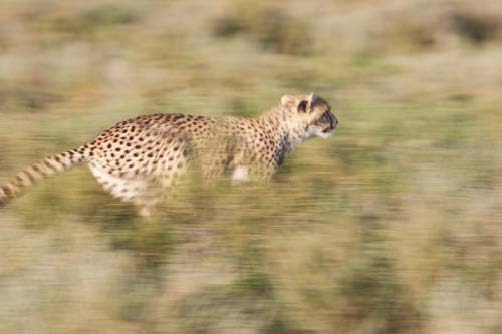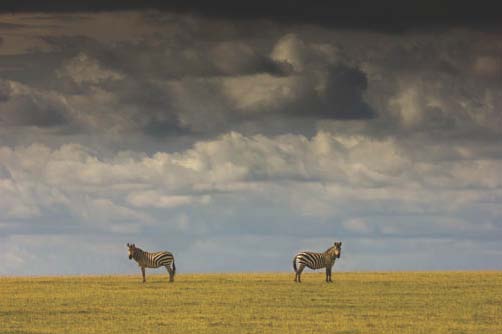
|
|
|
Asilia to open The Highlands, Ngorongoro TanzaniaARUSHA, Tanzania - Asilia Africa is delighted to announce that their newest property, The Highlands, will open in Ngorongoro in March 2016. The Highlands redefines the Ngorongoro experience. Set high on the slopes of Olmoti volcano, with sweeping views all the way to the Serengeti, you can be at the famous Ngorongoro Crater floor at dawn but still far from any other camp. The eight luxurious tented suites offer king size beds with large windows so you can feel immersed in the endless views from the comfort of your bed. Wood burning stoves will keep your domed suite warm throughout the night.
The main area has been designed with the classic camp fire
experience in mind; even when it is too cold to go outside,
sit around a roaring fire at the inside fireplace, the
perfect place to unwind at the end of an adventurous day
exploring. SNAP UP THE LATEST TREND FOR SAFARI By Melissa kay
The New York Times rated
Tanzania at number 7 of 45 must-see destinations last year,
billing the country as ‘coming into its own as an upscale
safari destination’. Well the New York Times was absolutely
right.
The wonders of Tanzania
are barely discovered by comparison with other African
safari destinations, (statistics for annual visitors still
only hover at an estimated 900,000), but innovative
companies that take time to really understand the
attractions and to build holidays to suit specific markets
are stealing a march on the East African tourist market, and
it’s fantastic for tourists prepared to come to Tanzania to
see for themselves.
One fantastic example My most recent adventure took me to the Ngorongoro Conservation Area with Capture Safaris, a company that specializes in photo workshop safaris. These ‘learning holidays’ are a fashionable phenomenon amongst the millions of digital camera owners who are keen to learn more about how to make the most of their investments, and are an ideal way to see the landmarks and expand your skills at the same time.
In order to please this
particular target market, the photo workshop safari must
deliver a great deal of content and this means that
itineraries need to be designed extremely carefully so as to
catch the action; drivers must be excellent trackers,
spotters and animal behaviour analysts as well as being
aware of photographers needs; and accommodation needs to be
high end so that equipment can be maintained and workshops
can take place. This means holidaymakers are getting the
very best of upscale safari, if it’s done right.
My safari with Capture
delivered exactly that. It took place during the Calving
Season - a period of just a few weeks which happens every
year in one particular spot (just where the edge of the
Ngorongoro Conservation Area meets the southern plains of
the Serengeti) and marks the gathering before the Great
Migration begins. During this time over 500,000 calves are
born and this attracts the largest ever recorded
concentration of predators to the area. The green season
also provides a spectacular backdrop of vibrant colours
against which to learn photography. Add to this the
experience and expertise of Paul Joynson-Hicks, the famous
African wildlife photographer (recently placed in the top
twenty by Professional Photographer of the Year Awards
judges), who was our tutor for the week and we really did
have every opportunity to learn. We witnessed calving,
chases, even kills and saw some of the rarer wildlife,
including Bat Eared Foxes and Honey Badgers, to boot.
In addition, Capture
Safaris partners with the famous Nomad Tanzania, a company
with a wealth of experience and an excellent reputation.
That meant that after long days out on shoots we were
returning to well-located camps that were near the action,
good hot food, and very comfortable accommodation – all
crucial to be able to bounce out of bed with enthusiasm at
5am each day ready for the next adventure!
A little bit of what we learned
Of course the workshops
are taught at the level of the participants so never be put
off by thinking it will too complex or too basic for you.
The range of discussions, workshops and lessons was as broad
as the people who had signed up to the trip and the range of
situations we found ourselves in so to share all the tips
and techniques would be impossible. But here are just a
couple of ideas you might want to try out with your own
travel photography.
1. Silhouettes can create striking images. By allowing the camera to meter whilst pointed at a bright sky, then keeping your shutter half depressed and refocusing on foreground objects before taking the photo, you can ensure that the foreground is deliberately underexposed and achieve some powerful shapes.
2. Paul’s panning technique uses the movement of an animal to create a sense of it’s speed aggression. Rather than freezing them in their movement it deliberately creates blur whilst maintaining a clear view of what the animal is and what it’s doing. Use Aperture priority setting and a low f stop number (so the aperture is wide open), then experiment with how you hold the camera – either tracking the movement of the animal or holding still and allowing the animal to move.
3. For the ideal
times of day to get that magical golden light, head out
at sunrise and sunset and then keep a close eye on your
settings as they will need to be adjusted minute to
minute as the light changes. (Sorry, you’ll have to come
on a safari to really learn how!)
In conclusion If you want to take better travel photographs then a hands-on, on-location course like this could provide some excellent subject matter and lessons than will go with you wherever you travel next. There’s a reason why Tanzania is increasingly being recognised as a top destination, and it’s not only down to the fantastically rich selection of wonders to see, it’s also down to the quality available. Get the right package for you, with the right company, and there is genuinely the trip of a lifetime waiting within these borders.
Details for my safari:
Visit
www.capturesafaris.com, email
info@capturesafaris.com or call +44 (0)207 183 2607
and get an itinerary together to suit your needs.
Capture Safaris specializes in photo tours offering the
highest level of guiding and accommodation to support
photographers of all skills levels in making the most of
the scenery, wildlife and action. The package price for
this Calving Season Photographic Workshop Safari was
GBP3,750 pp.
What’s involved in a photo workshop safari? [bullet points to include as a click through – optional]
These sorts of
holiday might appear in many guises, but there are some
elements it is well worth looking out for:
Also here are my top tips for
additional things to ask about before you book:
|

.jpg)


